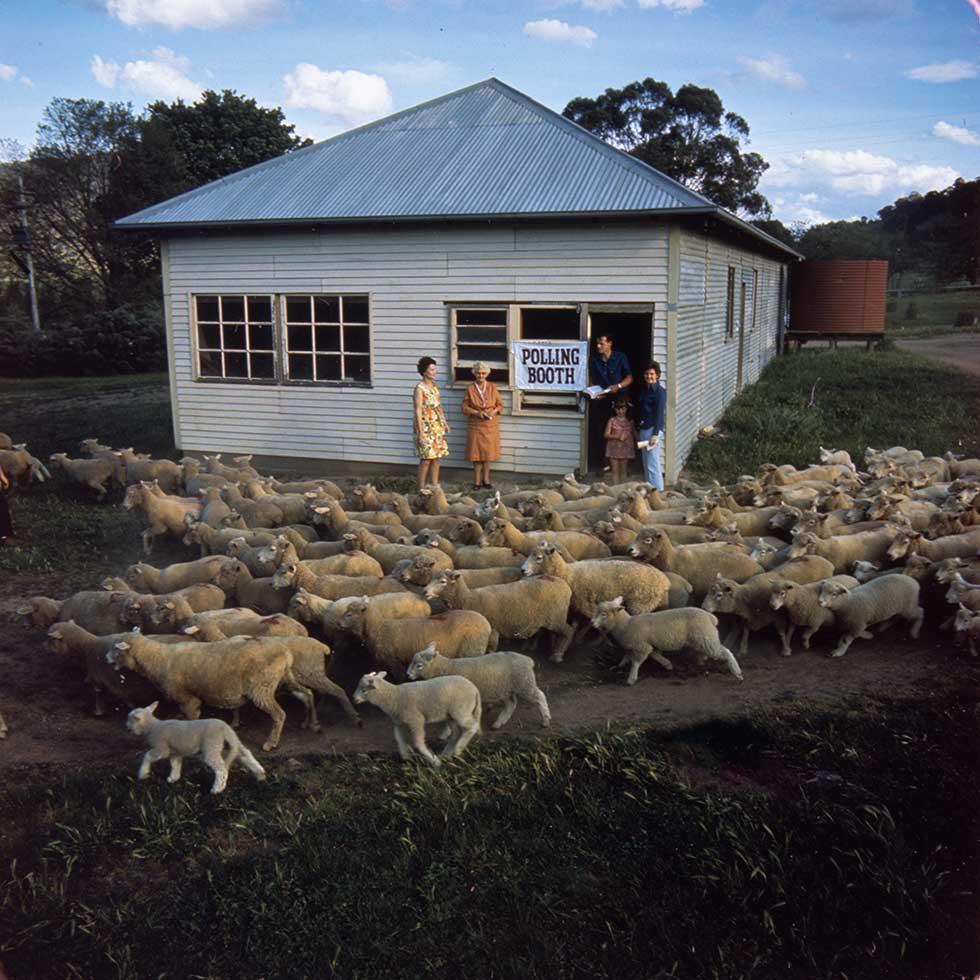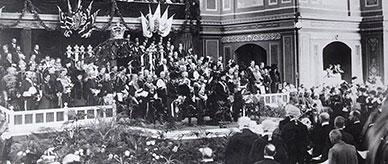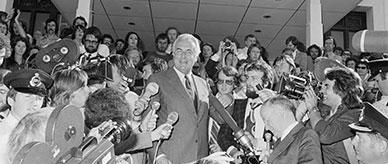


About the record
This is a colour photograph of a polling booth at what appears to be a wooden community hall in the Australian Capital Territory. It was probably taken on or before 25 November 1969. Five people are seen near the doorway of the building and a flock of sheep and lambs are moving across the foreground of the photograph.
Educational value
- This photograph shows a polling booth (also known as a polling place or station) where ACT electors would have gone to cast their votes in the 1969 election for the House of Representatives in the Australian parliament. There is no legal requirement governing the location of polling places, but they are generally located in local schools, community or church halls, or public buildings. This booth appears to have been established for rural ACT voters.
- The scene is quite atypical of a modern polling booth on election day, so it is possible that this photograph was taken before the booth opened at 8am. There are no posters showing photographs of candidates and party leaders on display, no volunteers from political parties distributing how-to-vote cards and no queues of electors waiting to enter the booth and cast their vote. Elections are always held on a Saturday and booths now close at 6pm.
- When the electors arrived at this polling booth, they would only have been voting for candidates seeking election to the ACT electorate's single seat in the House of Representatives. No election for the Senate was held as the elections had been out of synchronisation since 1963, and simultaneous elections for the House of Representatives and half-Senate would not be held until 1974.
- At booths such as this one in 1969, ACT electors voted for the first time for a representative who would have the same rights as any other member of the House of Representatives. The ACT had only had a representative since 1948, and that member was not allowed to vote at all. In 1959 the ACT member had gained the right to vote in the House on all issues relating to the ACT, and finally in 1966 all restrictions to full voting rights in parliament were removed.
- The location of this photograph within kilometres of the seat of power in Canberra, but seemingly thousands of kilometres away in a peaceful rural location where the sheep outnumber the people, provides an unusual view of the territory surrounding Australia's capital. The photograph suggests a theme of 'so near but so far' from the political drama of election outcomes, and yet these people will take their part in electing the nation's government.
Acknowledgments
Learning resource text © Education Services Australia Limited and the National Archives of Australia 2010.
Related themes
Need help with your research?
Learn how to interpret primary sources, use our collection and more.


